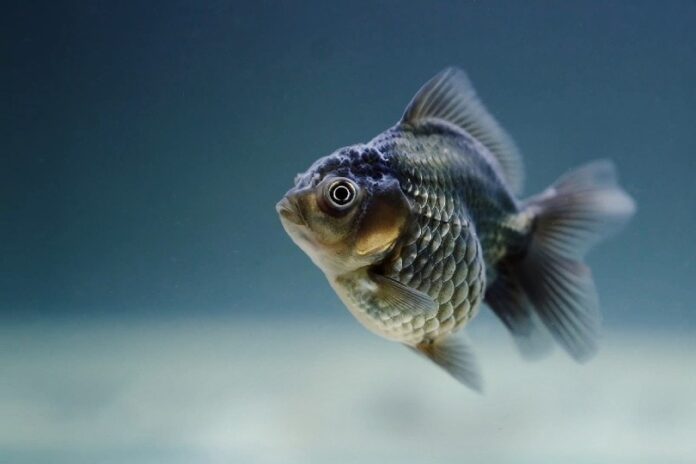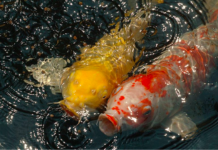Last Updated on October 19, 2023 by Fumipets
Why is My Goldfish Turning Black?
Goldfish can be delightful aquatic pets, but their color changes, such as turning black, can be a cause for concern. Several factors may contribute to this phenomenon, and understanding them is crucial for maintaining the health and vibrancy of your goldfish.
1. Aging and Genetic Factors: As goldfish age, it’s common for their color to change, and this process is partly influenced by genetics. Some goldfish have a predisposition to develop darker pigmentation as they grow.
2. Water Quality: Poor water quality is a leading cause of health issues in goldfish. High levels of ammonia and nitrites can stress fish and lead to color changes. Ensure proper filtration, regular water changes, and monitor water parameters.
3. Stress: Goldfish can experience stress due to overcrowding, incompatible tankmates, or inadequate habitat conditions. Stress often leads to color changes, so providing a comfortable and spacious environment is essential.
4. Disease or Parasites: Illnesses and parasites can affect goldfish, causing color loss or changes. Common diseases like ich, flukes, or skin infections can manifest as darkening of the skin. Proper diagnosis and treatment are crucial.
5. Diet: Nutrition plays a role in goldfish color. Inadequate or imbalanced diets can result in color changes. Ensure you’re feeding your goldfish high-quality food with the right nutrients to maintain their vibrant colors.
Goldfish
Goldfish may develop new hues as they mature. You could see mild to severe color changes as they develop from juvenile to adult status; some goldfish even have their whole bodies change color at this stage. You may be wondering why your goldfish is acquiring black spots in different places all over its body without any other color changes. There are a several causes of black spots on your goldfish, some of which need for your assistance. Continue reading if you’ve observed black spots on your goldfish.
It’s All in the Genes
Actually, there is absolutely nothing wrong with certain goldfish that are merely genetically inclined to have black spots on their bodies. Shubunkins, a kind of goldfish, which already have patchy colouring that might deepen with time, are particularly prone to this.
Some goldfish have black spots on their scales or fins from birth, and as they mature, the spots only grow in size. Black genetic markers are not a cause for worry. However, it is crucial to note that most goldfish will not acquire black pigmentation with age but rather lose it. If any new black spots appear, they should be treated in case there is a problem with the tank.
Stressed Out Fish
Checking your water parameters and tank surroundings is a smart idea if you find your goldfish is getting black spots. Genetics prevents certain goldfish from getting black patches, and a stressful tank environment might cause black spots to appear.
This may be connected to abnormal water parameters, but it may also be connected to upsetting environmental elements including bullying, extreme heat, and frequent, upsetting changes. Examine every possible aspect of the surroundings if you find black spots forming on your goldfish. Make sure the water is at a healthy, safe temperature, that the parameters are in order, and that everyone in the tank is content and not being bullied.

Dangerous Ammonia
Ammonia poisoning, which is brought on by excessive ammonia levels, is most likely to blame for your goldfish acquiring black spots. Regarding ammonia poisoning-related black spots, there are both good news and bad news. The good news is that black patches really signify that healing is taking place; thus, the black spots are a result of the body’s attempt to recover from ammonia toxicity. The bad news is that forming black patches does not mean the ammonia levels are secure. Even if the ammonia level is still high, if a goldfish is exposed to an environment with high levels of ammonia for a prolonged period of time, its body will start to try to repair the harm by developing black patches.
Your tank’s ammonia level should be checked using a dependable test kit as soon as you notice that your goldfish are getting black spots. Overfeeding, decomposing organic debris in the tank like dead plants and animals, and insufficient filtration may all cause ammonia levels to rise. Any ammonia level over 0 has to be dealt with right away, and items that help keep ammonia levels safe should be used, along with water changes.
The dark areas will disappear as your goldfish continues to recuperate and ammonia levels are lowered. The black areas on your goldfish may sometimes disappear over night, but it may also take days or weeks. A significant difference may be made in how well your fish heals during this period by using products that encourage the creation of slime coat and help minimize fish stress.
Conclusion
Even while certain fish may acquire black patches naturally, you should still look into the reason to be cautious. Fin clamping, air gulping, and damaged or jagged fins are further behaviors that point to a problem with the water or the tank environment. Always verify your water’s characteristics if you’re unsure.
The most common reason for disease in goldfish is poor water quality, which also creates conditions for a variety of parasites, infections, and wounds including burns and fin injury. Even if you believe there isn’t an issue, it is always best for your goldfish to check the water. When it comes to the formation of black patches on your goldfish and water quality, it’s better to be safe than sorry!
https://www.youtube.com/watch?v=M26nOF0yBSs
Questions & Answers:
Is it normal for goldfish to change color as they age?
Yes, it’s normal for goldfish to change color as they age, and genetics can influence these changes.
How can I maintain good water quality for my goldfish?
Regular water changes, proper filtration, and monitoring ammonia and nitrite levels are essential for maintaining good water quality.
Can stress lead to my goldfish turning black?
Yes, stress due to overcrowding, unsuitable tankmates, or poor habitat conditions can cause color changes in goldfish.
What diseases can result in goldfish turning black?
Various diseases, such as ich, flukes, and skin infections, can lead to changes in goldfish color. Proper diagnosis and treatment are necessary.
How can I ensure my goldfish’s diet supports its color?
Feeding a high-quality, well-balanced diet with proper nutrients is essential to help maintain the vibrant colors of your goldfish.
Understanding the reasons behind your goldfish’s color change and addressing any underlying issues can help keep your aquatic pet healthy and vibrant.


















